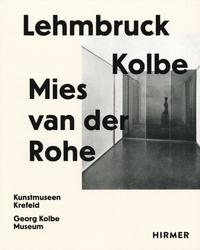Lehmbruck – Kolbe – Mies van der RoheArtificial Biotopes–Haus Lange
In the first exhibition highlight of the year, three outstanding artists – Wilhelm Lehmbruck, Georg Kolbe, and Ludwig Mies van der Rohe – are being brought together for the first time at Haus Lange in Krefeld. Figurative sculpture, as repeatedly integrated into designs and buildings by the architect Mies van der Rohe, is thus placed in direct dialog with the building, the design, and the gardens of Haus Lange. The background for the interplay between architecture and sculpture is the natural-philosophical climate, which, in the early twentieth century, influenced a wide range of disciplines. On display will be roughly fifteen sculptures by Lehmbruck and Kolbe as part of the organic body of Haus Lange.
In 1927, Ludwig Mies an der Rohe (1886–1969) integrated a sculpture into one of his buildings for the first time. He preferred figurative sculptures in his early European work. The installation of Kolbe’s sculpture Der Morgen (Morning) in the Barcelona Pavilion at the 1928/29 International Exposition became famous. The sculptors Wilhelm Lehmbruck (1881–1919) and Georg Kolbe (1877–1947) updated the sculptural image of humankind and reflected the achievements of abstraction in figurative sculpture. All three operated within a cultural climate that was significantly influenced by findings in the field of natural science. For example, the biologist Raoul Francé, who is almost forgotten today, drafted a biocentric worldview, which also verifiably influenced Mies van der Rohe.
In the exhibition, eight sculptures by Wilhelm Lehmbruck and seven by Georg Kolbe, including Mädchen sich umdrehend (Girl, Turning) und Der Morgen, interact with the spaces, materials, and nature of the house. Through their different materials (bronze, plaster, cast stone) and poses, the sculptures reveal the abstracting possibilities offered by the human figure and how a spatial reference can be formulated. They transport the idea of the human body as an organism into Haus Lange. The house itself becomes an exhibit that can be understood as an organic system with its garden layout and with building materials such as wood, clay, travertine, marble, and glass. The installation of the exhibition provides many references to such “natural” connections and lend both Mies van der Rohe and Raoul Francé a voice by means of projections.
The project is accompanied by a comprehensive catalog (German/English). The exhibition is being developed in cooperation with the Kolbe Museum in Berlin, which will host the exhibition in 2022.
The exhibition is funded by the Ministry of Culture and Science of thr State of North-Rhine Westphalia, the Sparkassenkulturstiftung, the State NRW, and kindly supported by Green Gartenkultur.
- pdf
A feature about the exhibition
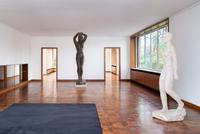
(exhibition view)
Mies van der Rohe, Lange House, 1927 – 1930, Hall
Georg Kolbe, Morning, 1925 und Large Striding Figure, 1929
Georg Kolbe Museum, Berlin
© VG Bild-Kunst, Bonn for Mies van der Rohe
Photo: Dirk Rose
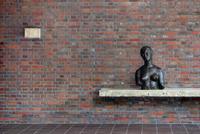
Mies van der Rohe, Haus Lange, 1927–1930, Krefeld, Terrace
Wilhelm Lehmbruck, Bust of a woman (Büste Frau L.), 1910, bronze, 80 × 52 x 31 cm, Kunstmuseen Krefeld
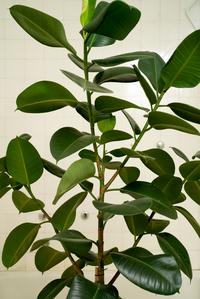
(exhibition view)
Mies van der Rohe, Lange House, 1927 – 1930, Bathroom
Rubber tree
© VG Bild-Kunst, Bonn for Mies van der Rohe
Photo: Dirk Rose
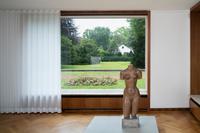
(exhibition view)
Mies van der Rohe, Lange House, 1927 – 1930, Living room
Wilhelm Lehmbruck, Torso oft he Large Thinker, 1913/14
Kunsthalle Mannheim, Stiftung Sally Falk 1921
© VG Bild-Kunst, Bonn for Mies van der Rohe
Photo: Dirk Rose
Exhibitions currently on view
Past related programme
- Event
FinissageLehmbruck Kolbe Mies van der RoheUnsere Ausstellung Lehmbruck Kolbe Mies van der Rohe. Künstliche Biotope möchten wir am 29. August 2021 mit einem erlebnisreichen Sonntag schließen. Wir verabschieden uns von der Ausstellung mit einem Programm aus Führungen, Musik und einem kleinen kulinarischen Angebot.
Eintritt frei
Programm >More–Haus LangeProgramm
Kurzführungen durch die Ausstellung
11.30 / 12.30 / 13.30 / 15.00 / 16.00
Treffpunkt Halle Haus Lange
Für die Führungen ist eine Anmeldung erforderlich: servicekunstmuseen@krefeld.de, Tel. 02151 - 97558137Musik
A-Cappella mit den Niederrhein Harmonists und Liedern aus den 1920er Jahren
12.00 / 14.00Gastronomisches Angebot
Great’z - The Freshfood Truck
Frisches, nachhaltiges Streetfood vom Niederrhein
Burger, Streetfood und Softdrinks
11.30 – ca. 14.30Underdog Espresso
Kaffeewagen
Kaffeegenuss aus dem Rheinland
Diverse Kaffeesorten und Wasser
11.00 – 17.00- Virtual Conversation
Mies van der Rohe – The Library of LifeConversation between exhibition curator Sylvia Martin and scholar Matthew Vollgraff (The Warburg Institute, London), who contributed a piece on Mies van der Rohe’s library and the organic understanding of the world in the 1920s. In EnglishMore- Virtual Conversation
CommunitySylvia Martin, deputy director of the Kunstmuseen Krefeld with Julia Wallner, director of the Georg Kolbe Museum in Berlin, will speak about the origins, challenges and surprises around the exhibition. You will find the link here!
Here you will find the virtual conversationMore- Digitale Eröffnung
Lehmbruck Kolbe Mies van der RoheZur Eröffnung grüßen Frank Meyer, Oberbürgermeister der Stadt Krefeld, Katia Baudin, Direktorin der Kunstmuseen Krefeld und Sylvia Martin, Kuratorin der AusstellungMore
